
 |
Eager Space | Videos | All Video Text | Support | Community | About |
|---|

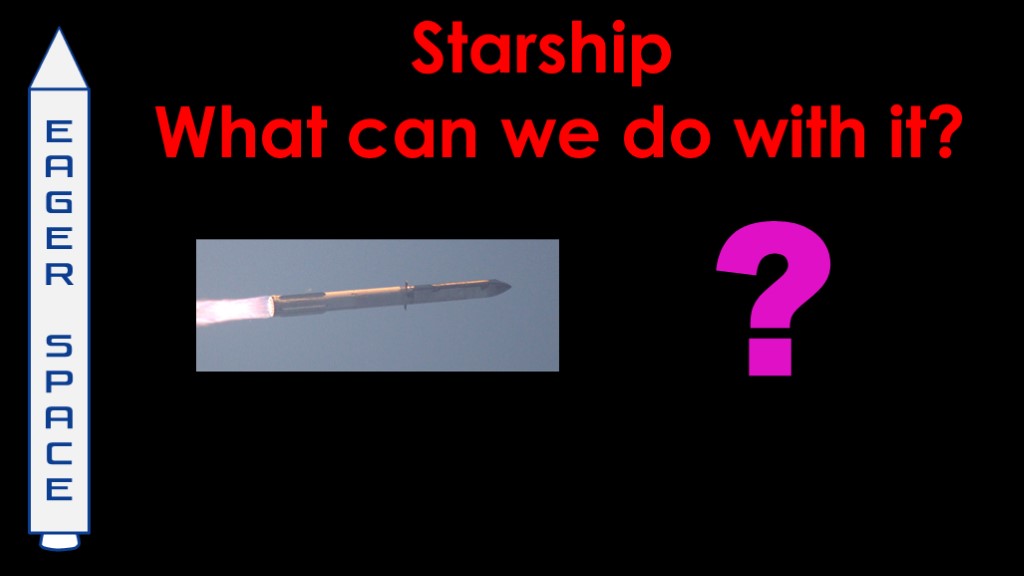

For the past few years, the main question about starship is "will it work?"
But there's a very good chance that in the next year, starship will become operational, and that question will change to "what can we do with it?"

We know what SpaceX wants to do with Starship...
They want to use it to launch the much larger Starlink Version 2 satellites
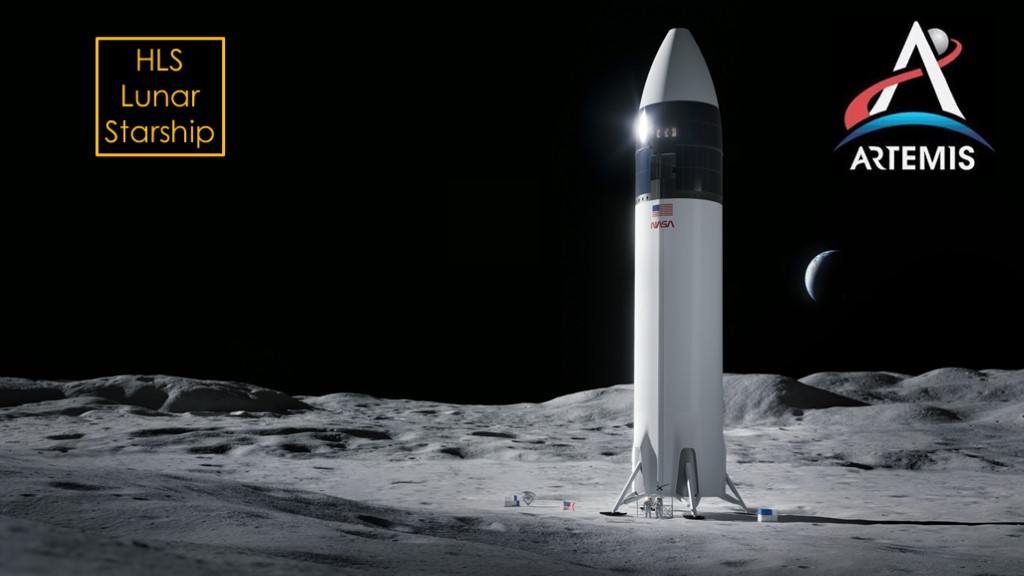
They want to finish the HLS lunar starship mission as part of NASA's Artemis mission to return to the moon.
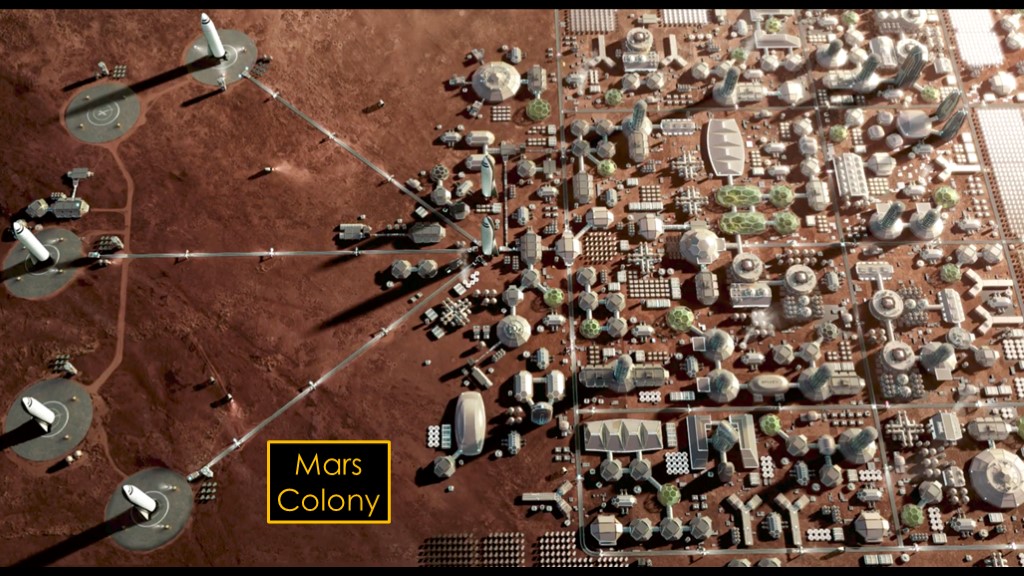
And ultimately, they want to use it to build a mars colony.
But how will everybody else use Starship?
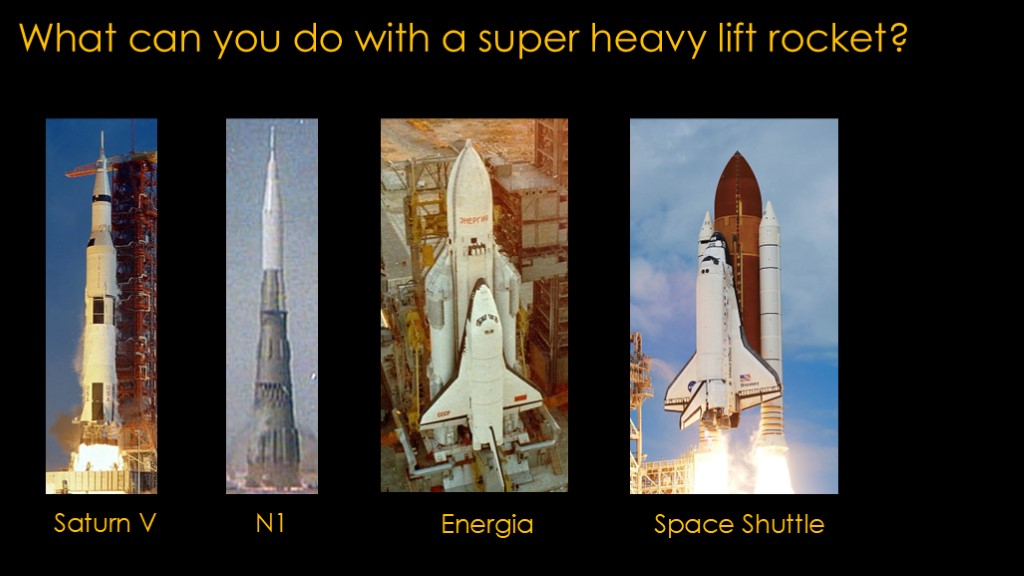
What can you do with a super-heavy lift rocket?
It's a fair question, as super-heavy lift rockets are rare. I'm going to use the Russia benchmark of at least 100 tons to low earth orbit as otherwise this class includes Falcon Heavy and that is just wrong.
The Saturn V was built purely to get to the moon and its only other use was to launch Skylab. The Soviet N1 never flew successfully but likely would have been purely dedicated to the moon mission.
The Soviet Energia is one of the more disappointing rockets around as it only flew twice, once carrying the Buran Shuttle. After those flights it was discontinued. Tons of potential to do interesting things, but the Soviets didn't come up with any uses.
And of course, the space shuttle. It was super heavy lift if you look at how much mass it took into orbit, but if you look at the payloads it actually carried, it was mostly a medium-lift rocket. So we'll have to take it away.
Based on these rockets, there's not much guidance for what we might use starship for.
What we need is a framework to compare what Starship can do to rockets that are currently operational.
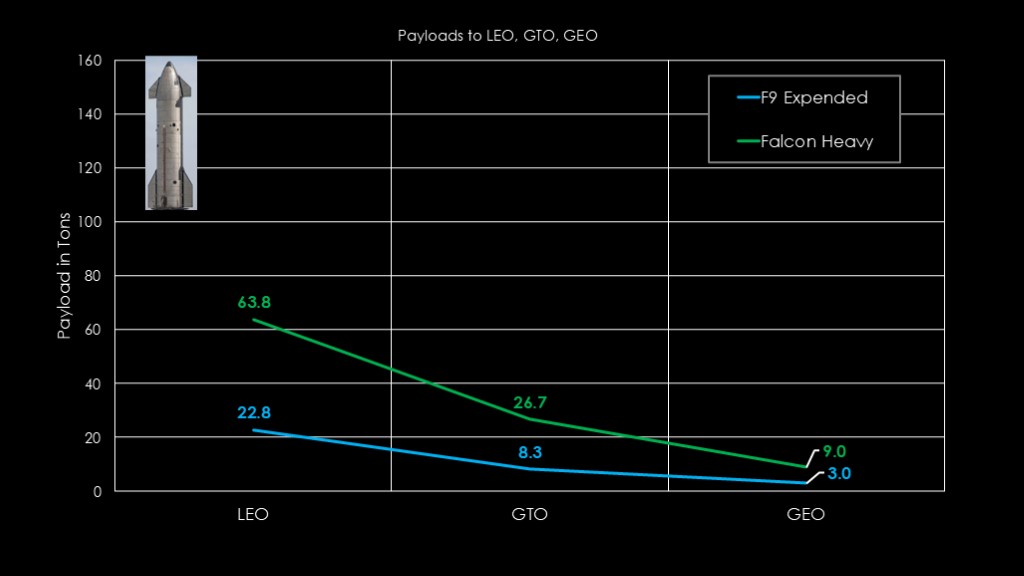
What we're going to be talking about is payloads to various orbits, and we'll be doing comparisons to Falcon 9 and Falcon Heavy, both in their fully expendable modes. Adding in the reusable versions adds a lot of complexity because of the different reuse modes so I've decided to skip it.
Starting at the bottom, Falcon 9 can carry 22.8 tons into low earth orbit, but only 8.3 tons to geosynchronous transfer orbit. The GTO orbit requires a lot more energy and cuts the payload down considerably. I didn't find any published numbers on Falcon 9's payload to geostationary orbit, but one of my models suggested that it's about 3 tons, so we'll go with that. Atlas V is a little less than 4 tons, so that's in the right ballpark.
Falcon Heavy can lift 63.8 tons to low earth orbit and a healthy 26.7 to geosynchronous transfer orbit. It can also carry about 9 tons all the way to geostationary orbit, which is the main reason Falcon Heavy exists - the NSSL launches for the government require SpaceX to be able to launch 6.6 tons all the way to geostationary orbit.
Note that any number higher than about 18 tons is a theoretical number - if you want to use Falcon Heavy to lift 63 tons into low earth orbit, you'll need a redesigned upper stage and a whole new payload adapter to do it.
So what about starship?
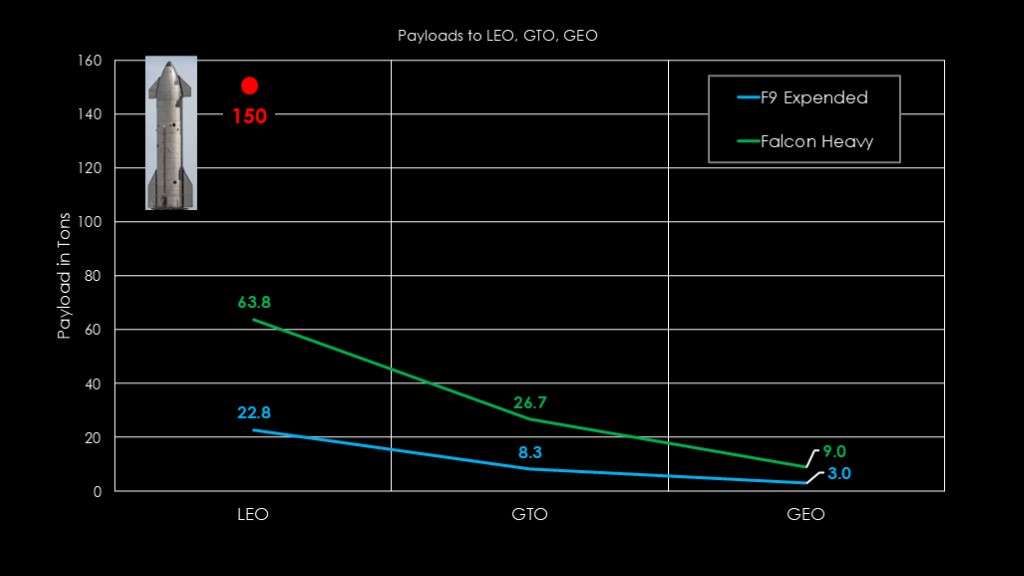
Starship gets you 150 tons in low earth orbit.
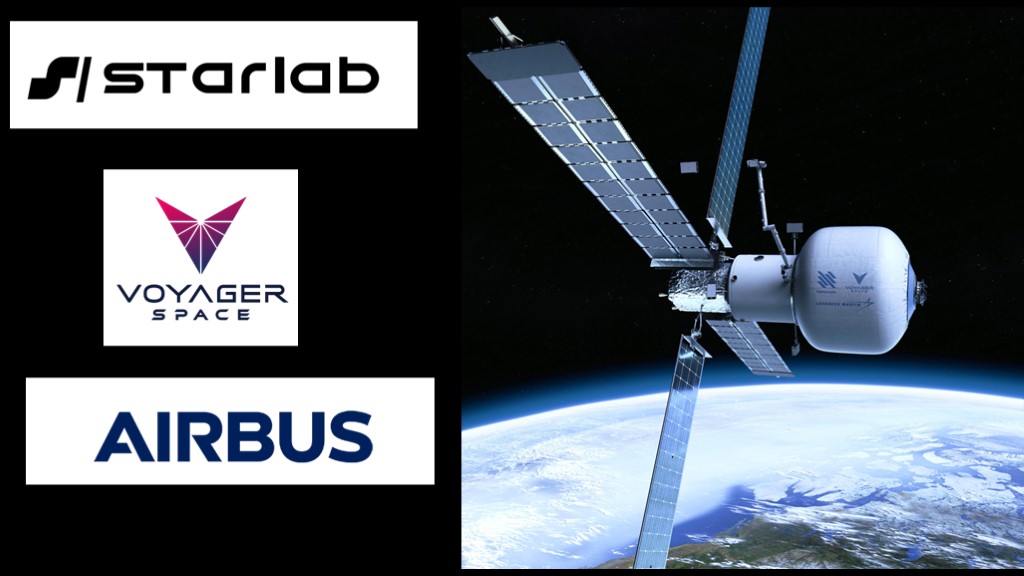
Voyager Space - a holding company for a number of space-related businesses - and airbus have teamed up to create starlab, a commercial space station in low earth orbit that will launch on a single flight of starship.
That's the only project I found planning to use all of starship's capacity at once.
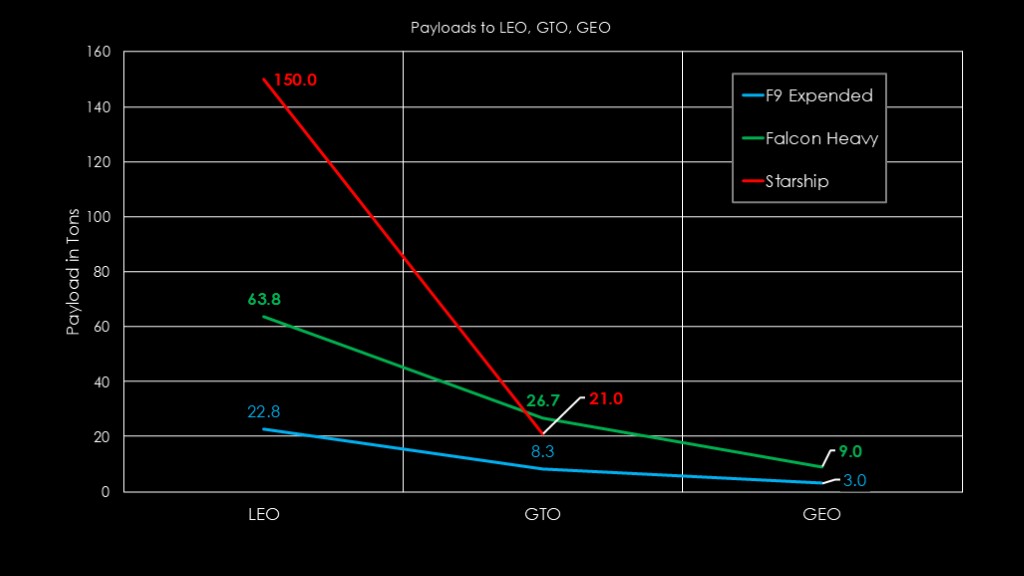
Here's some data for starship on higher orbits.
We can expect it to only deliver about 21 tons to geosynchronous transfer orbit. That's only about 14% of the payload to leo and quite a bit less than Falcon Heavy can do.
What's going on?
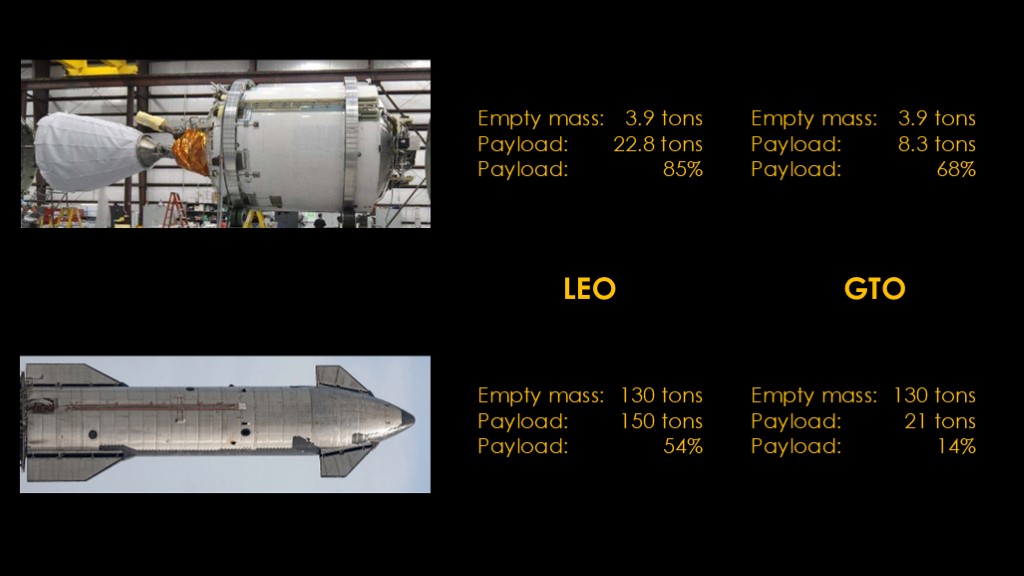
It's all about empty mass.
The Falcon 9 second stage is very light - only 3.9 tons. That means when it's going into low earth orbit, 85% of the mass is payload. Going to higher energy orbits, the empty mass obviously remains the same, so a reduction in total mass only comes from the payload. For geosynchronous transfer orbit, we're down to 68% payload, which is still quite good.
Starship is a very different vehicle. Because it is designed to be reusable, it's carrying a lot of extra mass - flaps, heat shield, motor protection, and landing fuel. That bumps up the empty mass and therefore knocks down the payload at the same time. So at LEO we end up with a payload percentage of only 54%. For GTO we're still carrying all that extra mass, and our payload percentage goes way down, to 14%. A little harder orbit and the payload goes to zero.
Much better than shuttle, which had an atrocious payload percentage, but reusable second stages are always going to have the problem of high empty mass.
Are there ways to get to higher orbits efficiently using starship?
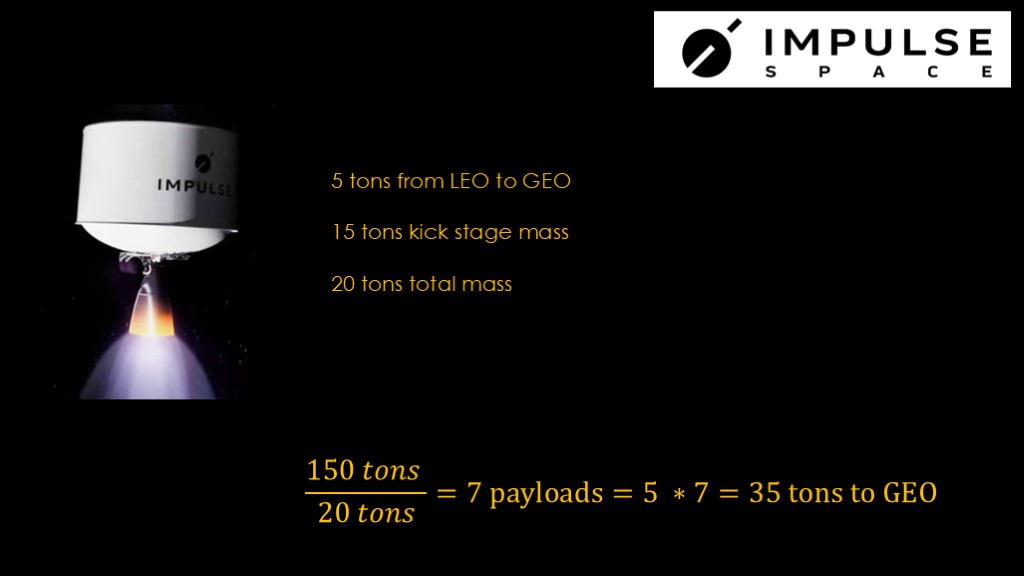
The obvious solution is to add another stage. I talked about Impulse Space's Helios kick stage in a previous video, and their goal is to put payloads directly into GEO from LEO. A conservative estimate says that they can get 5 tons to GEO with a 15 ton vehicle, so 20 tons total mass.
Do a bit of math, and we find that you could carry 7 kick stages and payloads in a single starship launch and that would get you 35 tons to GEO in a single launch. Though not a single 35 ton payload.
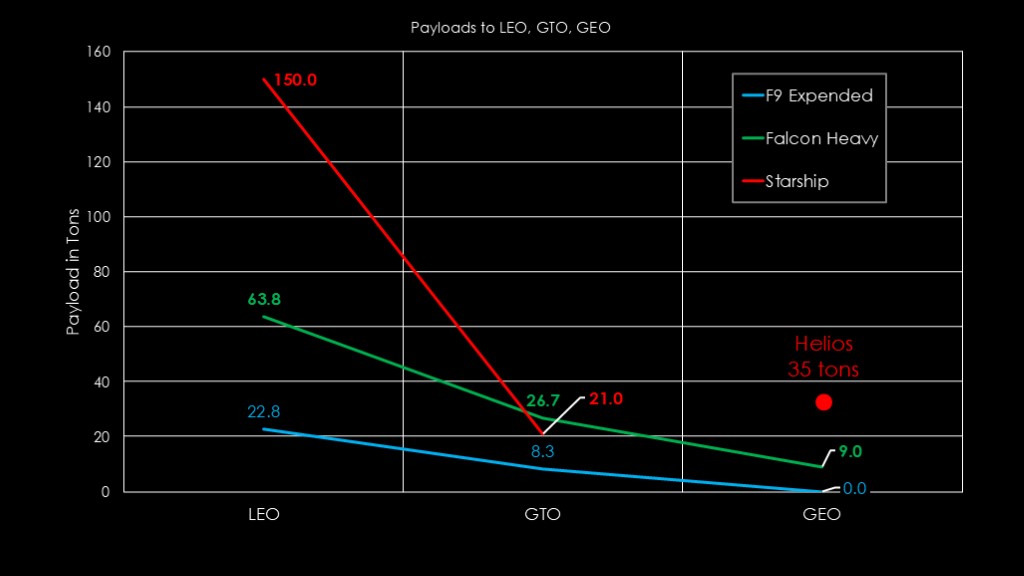
Adding that to our graph, if we can carry 7 Helios kick stages with payloads, that puts our starship payload to Geostationary orbit to 35 tons.
That's pretty good for the cost of 7 kick stages which are supposedly going to be relatively cheap.
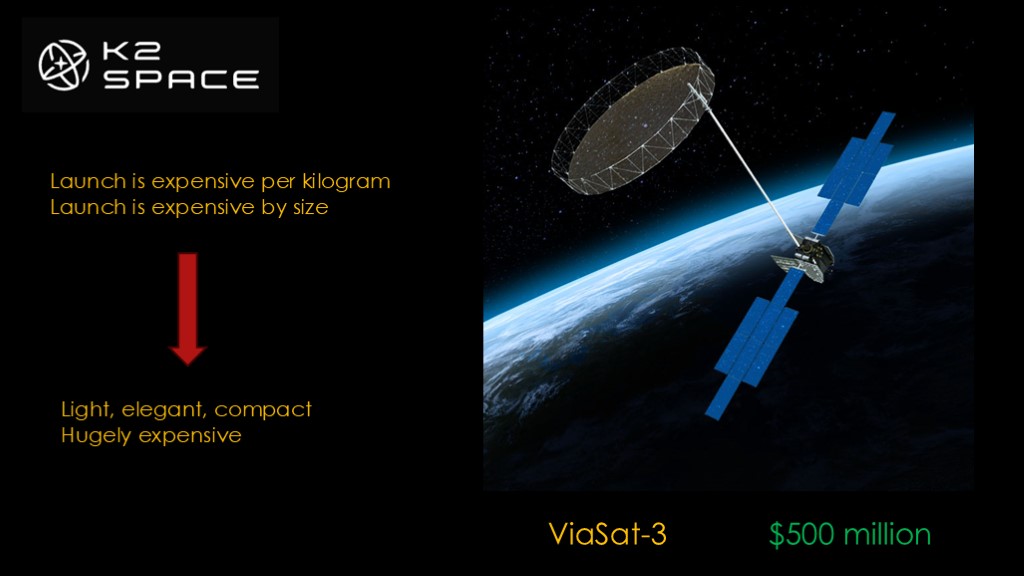
K2 space is a new company taking a new approach...
Traditional wisdom assumes that it's expensive to launch a kilogram of mass and it's expensive to launch big satellites.
That has driven satellite bus designs to be light, elegant, and compact. And also hugely expensive.
The first ViaSat-3 satellite was launched in 2023 on a Falcon Heavy. The satellite cost over $500 million dollars, not including the cost of the Falcon Heavy launch, probably in the $100 million range.
If you want the ultimate communications satellite, that may be the only way to do it.
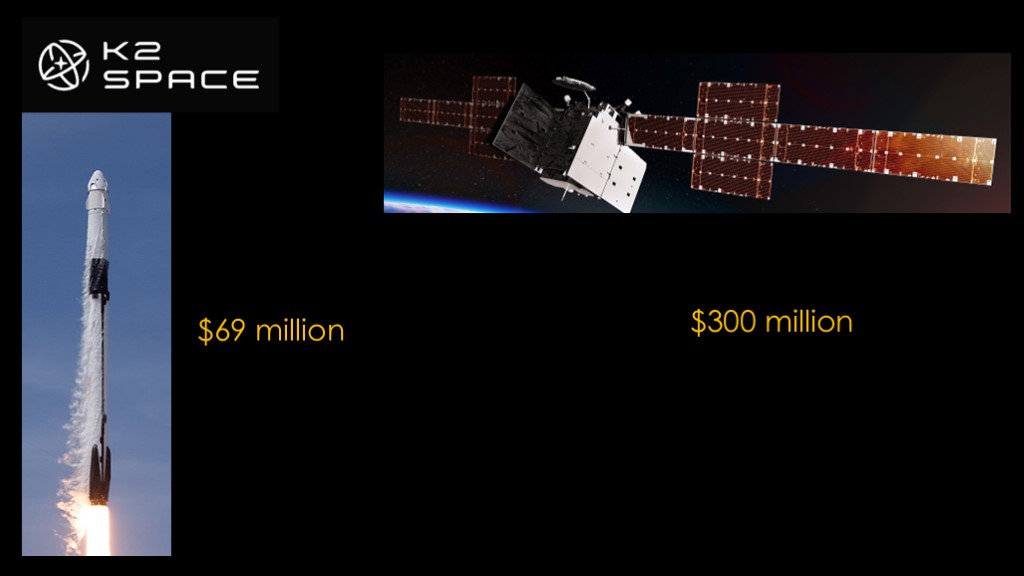
The market is in a very strange position. Launching on Falcon 9 costs about $69 million
A communications satellite costs $300 million and up, partly because it's constructed to be as light as possible.
What if you could build a satellite using less expensive materials that would do 90% of what your expensive one could do but it only cost $100 million?
That seems interesting, but the satellite manufacturers are in the business of selling the most expensive satellite possible.

Let look at a constellation example in low-ish orbit.
Let's say you build a wonderful constellation satellite at $100 million each using the same tech as in the geostationary satellites. They are small and light, so you can fit 5 of them in a Falcon 9. That gives a total price to build and launch 5 satellites at $569 million, or $114 million each.
Now let's say you build simple heavier satellites, and that allows you to build them for $50 million each, but because of their size and mass you can only fit 3 in a Falcon 9. That gives you total cost of $219 million for 3 satellites, or $ 73 million each. About 25% cheaper.
That is K2 Space's bet. Because the cost of launch is so much lower, you can build capable satellites that are bigger and heavier but will end up being cheaper.
Their target is $15 million per satellite. If they could achieve that in this scenario, the cost per satellite drops to $38 million each.
Highly optimized expensive satellites make little sense when launch is so cheap.
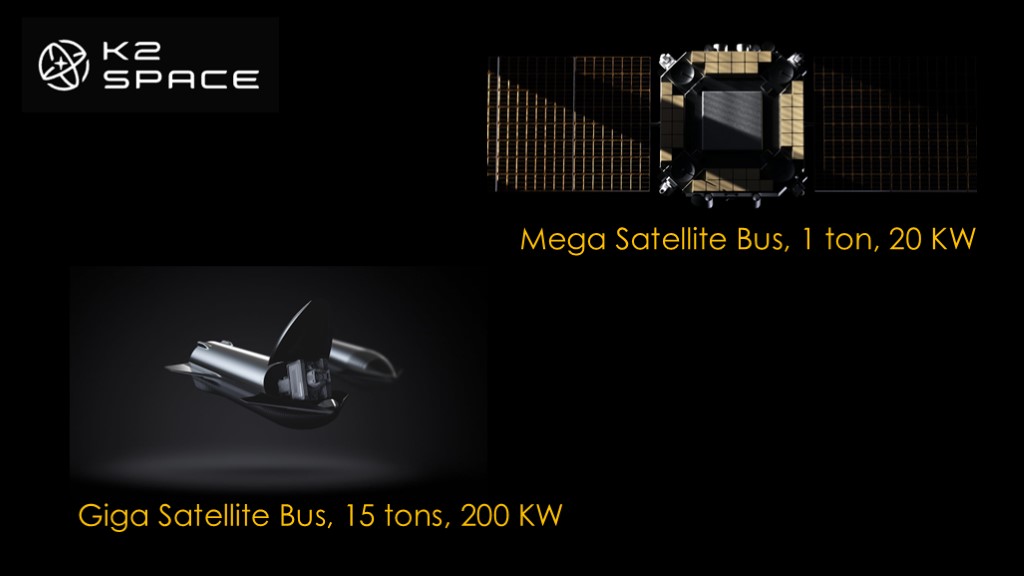
K2 is working on two products.
The mega satellite bus is a flat-pack design that will fit 10 satellites in a Falcon 9 fairing, stacked the way Starlink Satellites are stacked. It has a one-ton payload and a power system that can supply 20 kilowatts of power, an immense amount of power for a satellite this size.
Their second product is the giga satellite bus using the same concept but sized for starship, with a payload of 15 tons and 200 kilowatts of power.
K2 will be worth watching in the next few years.
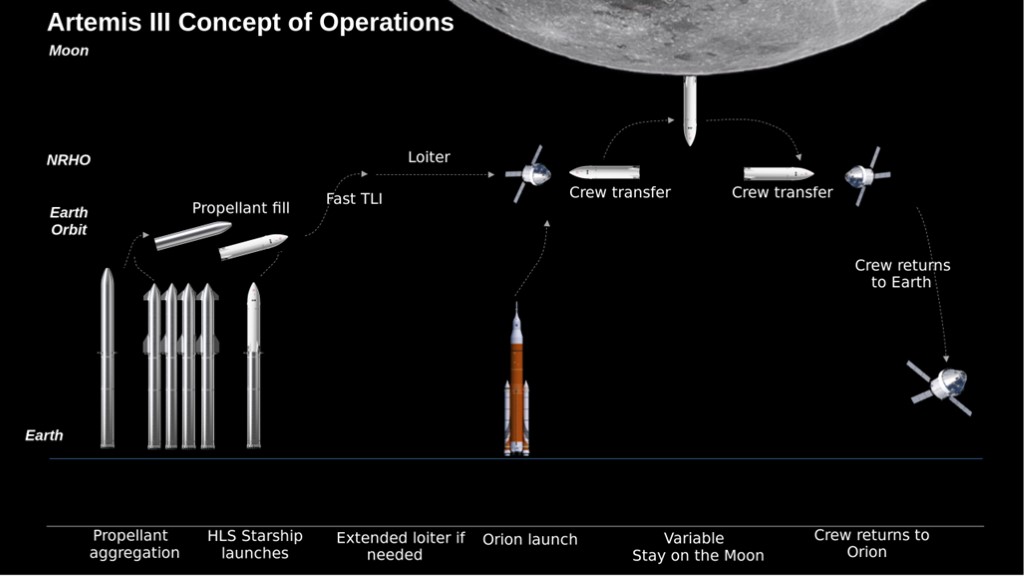
The other option to deal with starships low payload to harder destinations is pretty obvious.
Inherent in the starship lunar architecture - and the starship architecture in general - is the concept of orbital refueling. It simply does not work without orbital refueling, and SpaceX is working on hard on that capability.
So, if we have that capability, what does it do for us with normal payloads?
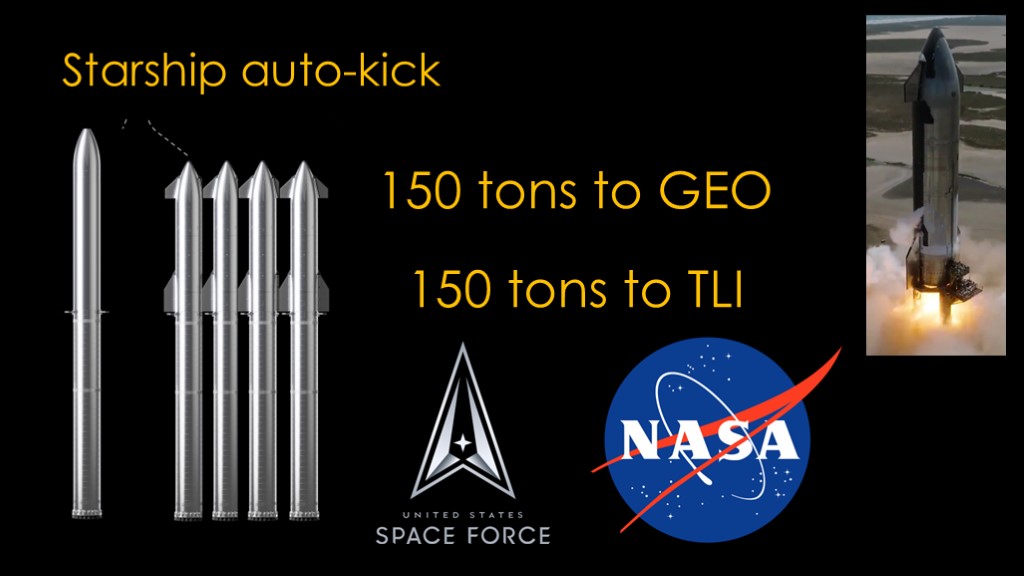
We can use refueling to turn starship into its own kick stage. If we take a starship and refuel it with 4 tankers, we have enough oomph to take the entire 150 ton payload to GEO.
It probably does not leave enough margin to do it in a reusable mode, so the starship stays out there. An expendable starship with more than four tankers of propellant will likely do a lot more payload, perhaps 250 tons.
Note that if you are launching from Florida or Texas, the cost to get a payload to geostationary orbit is pretty close to the cost to get it to the moon, so that means 150 tons to the moon as well.
There are two really obvious customers for this sort of capability - the US Space Force would love to have that capability in geostationary orbit, and NASA could certainly use it for its moon plans.
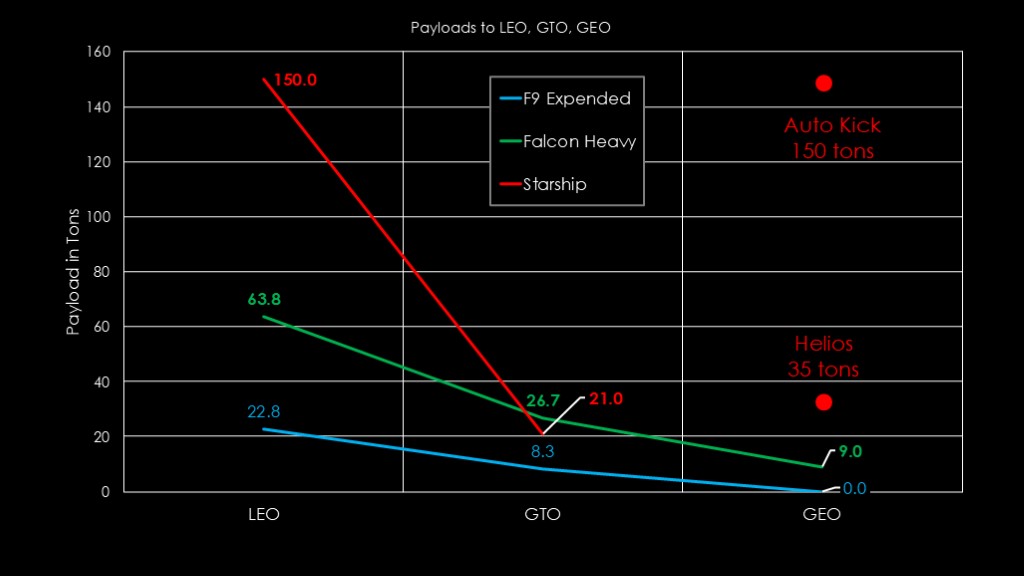
These are the options for payload to harder orbits. Use a kick stage like Helios, or refuel and use starship as its own kick stage. Either give very impressive payload to GEO and beyond.
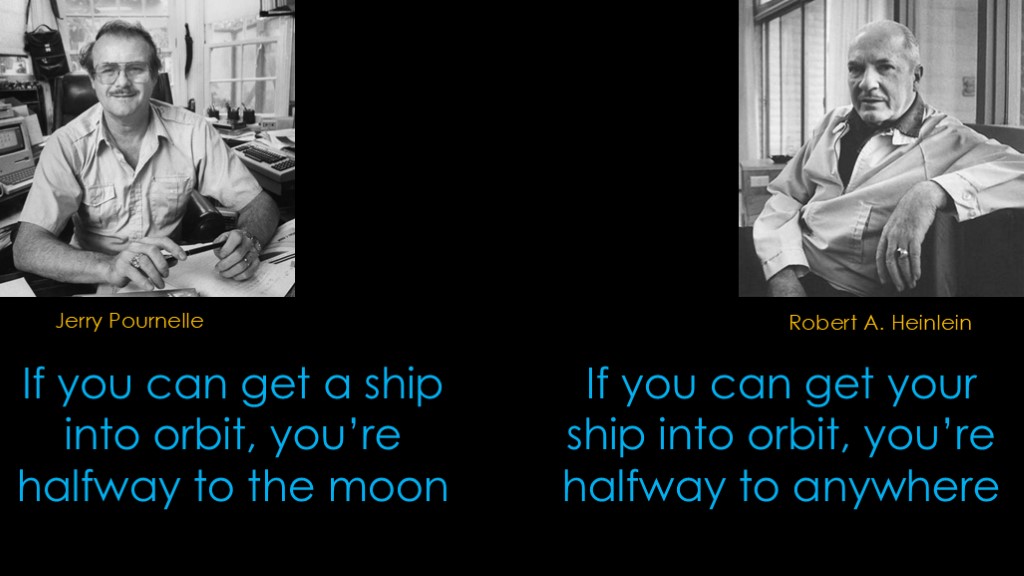
I'd like to share one final perspective with you.
Noted science fiction authors Jerry Pournelle and Robert A. Heinlein were discussing the plot of a story, and Pournelle remarked that if you can get a ship into orbit, you're halfway to the moon.
Heinlein corrected that if you can get a ship to orbit, you're halfway to anywhere.
The ability of Starship to get very heavy payloads into low earth orbit and beyond opens up a whole new era in space exploration.

If you enjoyed this video, give this a listen